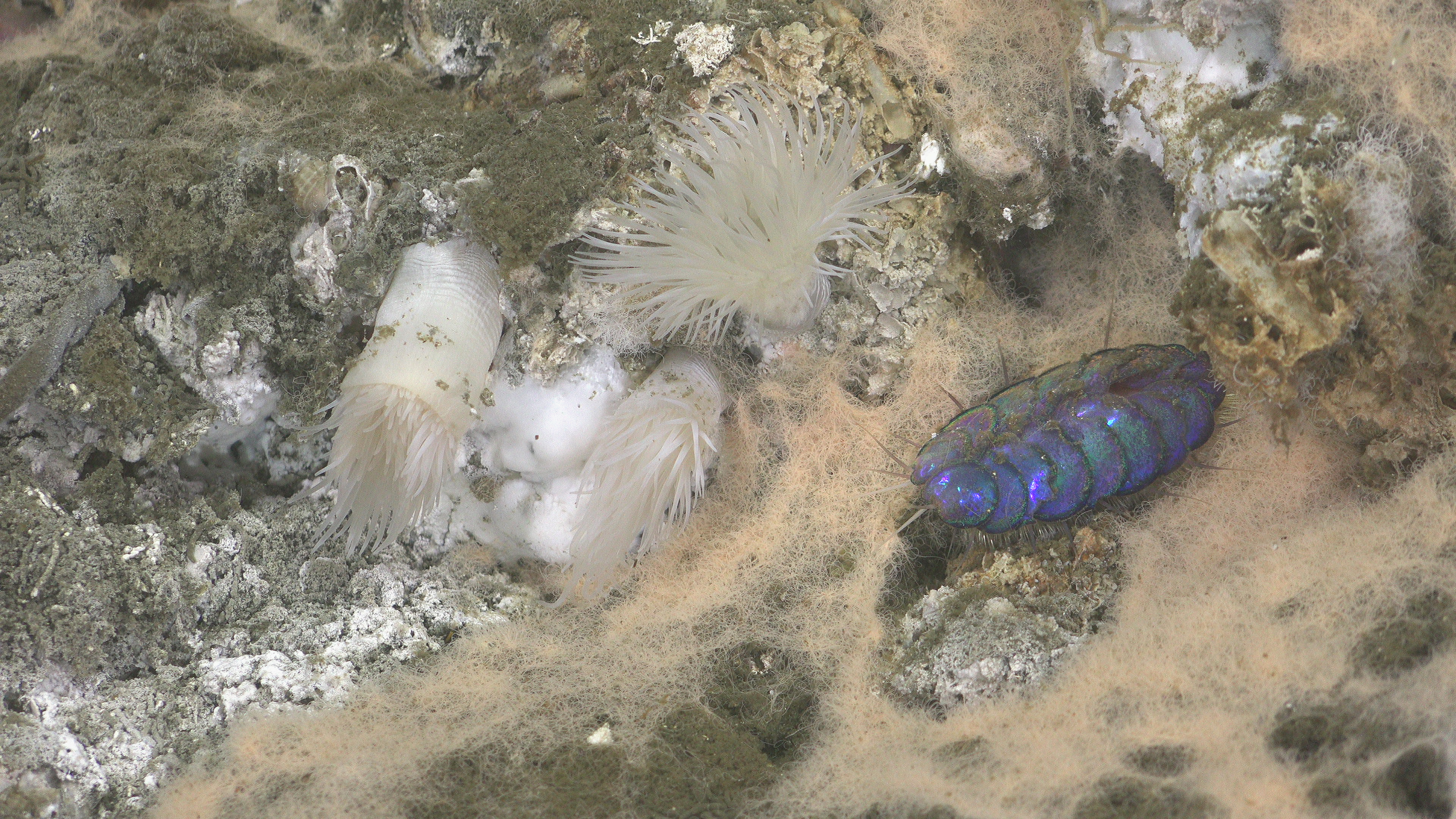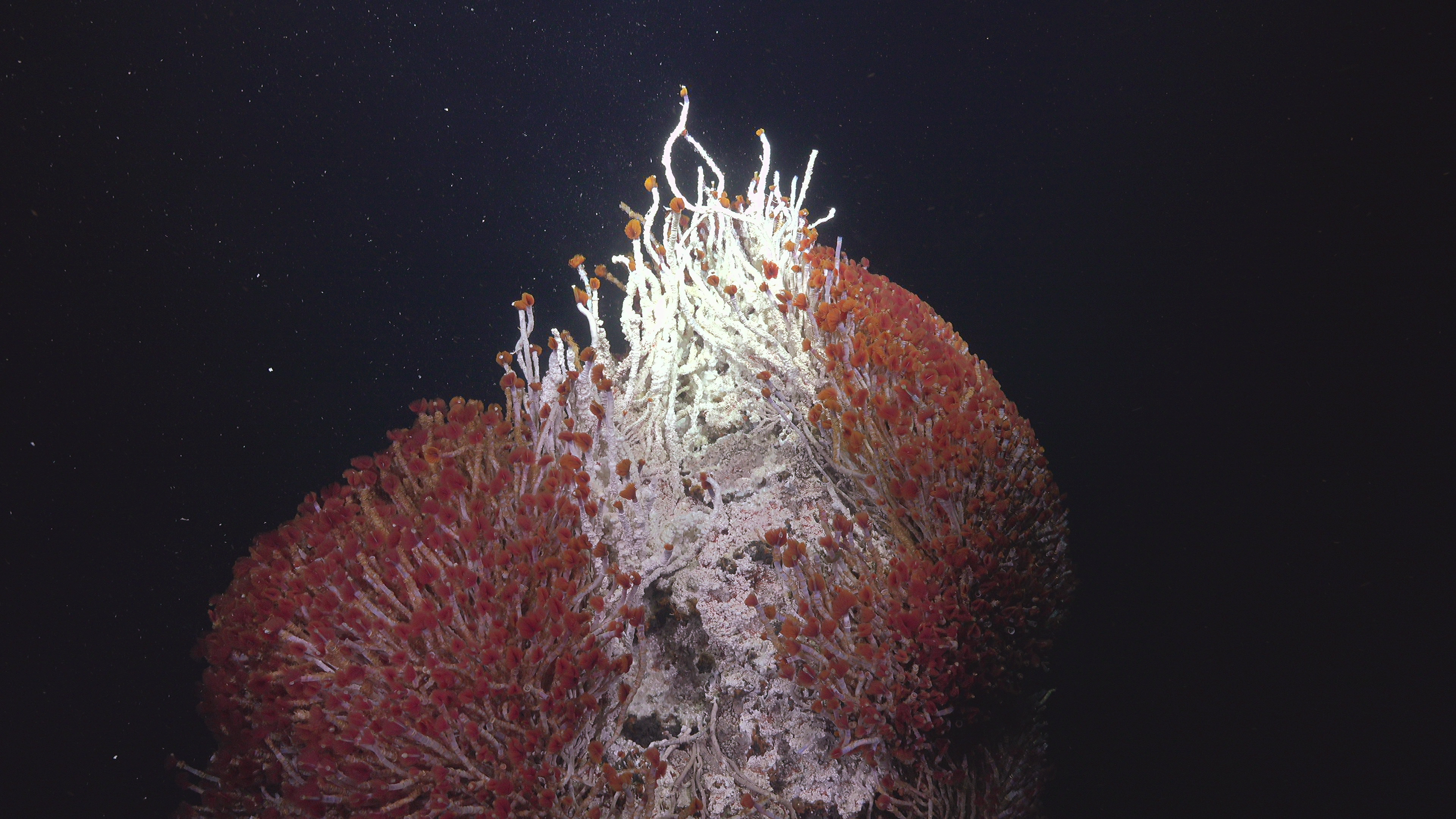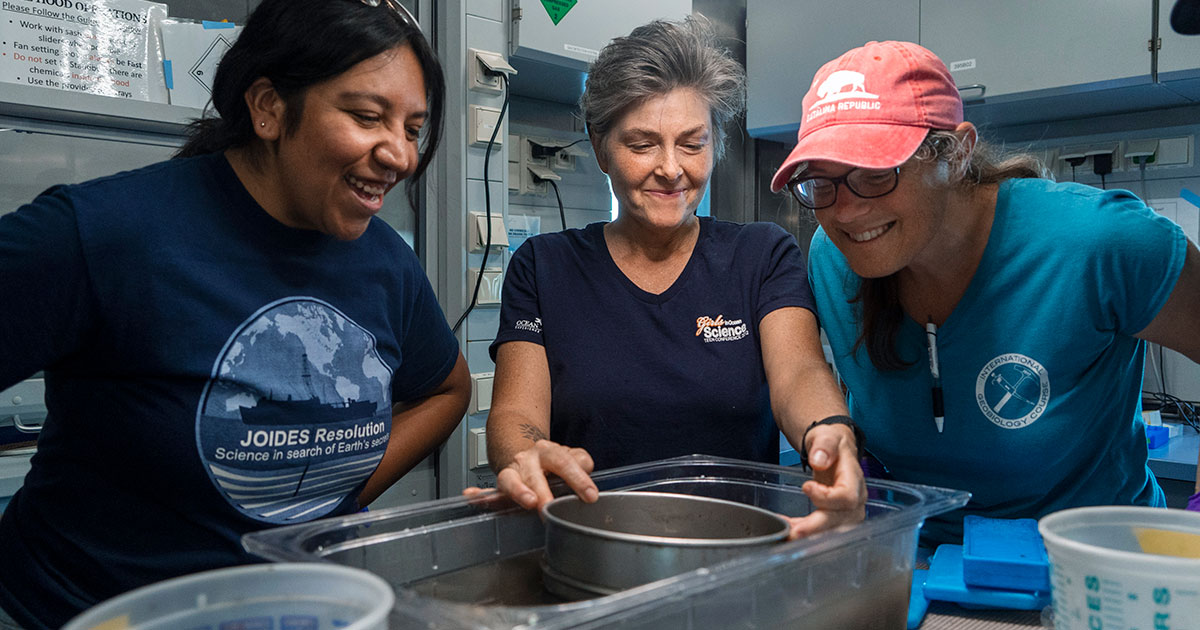Most of what we know about the ocean is from coastal and nearshore environments, the spaces where light still penetrates. Yet the deep sea remains largely unknown, even though it is the largest habitable space for life on earth. Many species persist in the deep sea, from massive colonies of tubeworms living along hydrothermal vents to deep-sea corals creating ethereal reef structures. While it is estimated that the deep ocean constitutes over 95 percent of the total water volume in the ocean, less than 10 percent has been surveyed. Many deep-sea relationships, and the role it plays within the global earth system, remain unknown.
Knowledge gaps pose a significant challenge for understanding how climate change affects the ocean’s depths. We know human actions impact the ocean through warming temperatures and increasing acidity, causing cascading effects to life-sustaining processes. However, we are still in the early stages of assessing climate change's impacts on deep-ocean ecosystems.
Multidisciplinary and international deep-sea exploration are necessary for providing a baseline of ocean health in all parts of the water column. A basic understanding of the systems and the species that live within them is required. A recent expedition to the Pescadero Basin in the Gulf of California onboard Schmidt Ocean Institute’s R/V Falkor demonstrated the effectiveness of collaborative international and multidisciplinary research for better understanding deep ecosystems.
The science team, led by Dr. David Caress from MBARI (Monterey Bay Aquarium Research Institute), has been investigating the hydrothermal vent fields in Pescadero Basin for the past decade. The key to the team’s success is bringing together experts in the fields of geology, seafloor mapping, geophysics, microbiology, and ecology to characterize the system comprehensively, each discipline informing and providing insight into the discoveries of the other.
Hydrothermal vents release superheated fluid into cold, deep water, building stunning geologic features that support the surrounding ecosystem. Organisms living around the vents depend on these elements to create energy, and live in symbiosis with larger animals.
The research team has determined that Pescadero Basin vents differ considerably from other known vents around the world. It is the only known system where fluids coming from the vents are transparent instead of opaque and the geologic structures are primarily made from calcium carbonate rather than sulfides.
Fully understanding the hydrothermal vents found in the Pescadero Basin requires a multi-layered approach. The scientists seek to understand if the hydrothermal vents found in the Pescadero Basin are connected, if at all, and use heat flow measurements to help determine this. Preliminary results show that even though the fields are not that far apart, there may be significant differences in hydrothermal vent fluid beneath the surface. Heat flow has implications for the biology of the Pescadero Basin, as there seems to be a higher density of organisms in areas outside the active vents that have more increased heat flow.

Pink filamentous bacterial mat with a Peinaleopolynoe orphanae scale worm close to white anemones—which strangely, seem to prefer to live in areas of diffuse fluid flow (in which most anemones do not). Located at a depth of 3,656 meters. (Image credit: Schmidt Ocean Institute)
Biologists and geochemists then work together to examine how the hydrothermal vent fluid influences microbes and their symbiotic relationships with larger organisms. Many new species have been found in the Pescadero Basin, perhaps because the vent chemistry is so different from other known systems. New species include arrow and roundworms and the first known chemosynthetic cnidarian, an anemone. This multidisciplinary investigation has facilitated scientists creating a comprehensive picture of the biological, chemical, and physical conditions of the hydrothermal vents in the Basin. Together, they have established a baseline for this spectacular environment.

The Matterhorn, a hydrothermal vent of Pescadero basin displaying an abundance of red tube worms and white microbial mats. (Image credit: Schmidt Ocean Institute)
The ocean's biological, chemical, and physical conditions are closely intertwined, and climate change will undoubtedly impact the deep sea. By establishing baselines for deep-ocean ecosystems, scientists will better understand how climate change is affecting the deep sea. Success requires international and multidisciplinary research to understand how ocean systems will respond as a whole so we can observe how they change over time. Further research should look to the approach of Dr. David Caress and his colleagues and the exemplary work they have demonstrated in examining a system through a holistic, multidisciplinary lens.
This feature appeared in Environment, Coastal & Offshore (ECO) Magazine's 2022 Spring edition, to read more access the magazine here.





